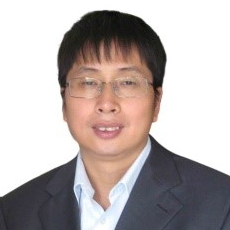Nanoscale Materials for Electromagnetic Applications
A special issue of Nanomaterials (ISSN 2079-4991). This special issue belongs to the section "Nanocomposite Materials".
Deadline for manuscript submissions: closed (10 December 2023) | Viewed by 266
Special Issue Editors
Interests: nanomaterials; nanomedicine; nanoscale magnetism
Special Issue Information
Dear Colleagues,
Many types of nanoparticles interact with magnetic fields, electric fields, or electromagnetic radiation, leading to interesting physical phenomena, such as fluorescence, surface plasmon resonance, inductive heating, etc. These phenomena underpin the diverse applications of these nanomaterials in a broad variety of fields. The properties and functionalities of the nanoparticles depend on their composition, shape, size, and surface chemistry. In addition, the properties of these nanoparticles can be further varied by incorporating two or more nanoscale units into one entity to form nanocomposites. Moreover, the properties of these nanoparticles can be further modified via interparticle interactions if they form an array or a cluster. These nanoparticles and their properties continue to be a rich source of scientific inquiry and technological exploration.
The aim of this Special Issue is to provide a platform for researchers to present their state-of-the-art research on electromagnetic nanomaterials. The materials of interest include carbon, metals, metal oxides, semiconductors, and their nanohybrids. We are pleased to invite researchers in this field to submit their work to this Special Issue. In this Special Issue, both original research articles and reviews are welcome. Research topics may include, but are not limited to, the following: the preparation and surface modification of nanomaterials, the assembly of nanoparticles, the characterization of nanomaterials, modeling the physical properties of nanoparticles, and the application of nanomaterials.
We look forward to receiving your contributions.
Dr. Qingbo Zhang
Dr. Jun Yang
Guest Editors
Manuscript Submission Information
Manuscripts should be submitted online at www.mdpi.com by registering and logging in to this website. Once you are registered, click here to go to the submission form. Manuscripts can be submitted until the deadline. All submissions that pass pre-check are peer-reviewed. Accepted papers will be published continuously in the journal (as soon as accepted) and will be listed together on the special issue website. Research articles, review articles as well as short communications are invited. For planned papers, a title and short abstract (about 100 words) can be sent to the Editorial Office for announcement on this website.
Submitted manuscripts should not have been published previously, nor be under consideration for publication elsewhere (except conference proceedings papers). All manuscripts are thoroughly refereed through a single-blind peer-review process. A guide for authors and other relevant information for submission of manuscripts is available on the Instructions for Authors page. Nanomaterials is an international peer-reviewed open access semimonthly journal published by MDPI.
Please visit the Instructions for Authors page before submitting a manuscript. The Article Processing Charge (APC) for publication in this open access journal is 2900 CHF (Swiss Francs). Submitted papers should be well formatted and use good English. Authors may use MDPI's English editing service prior to publication or during author revisions.
Keywords
- nanomaterials
- electromagnetic properties
- synthesis
- characterization
- simulation
- self-assembly
- applications







